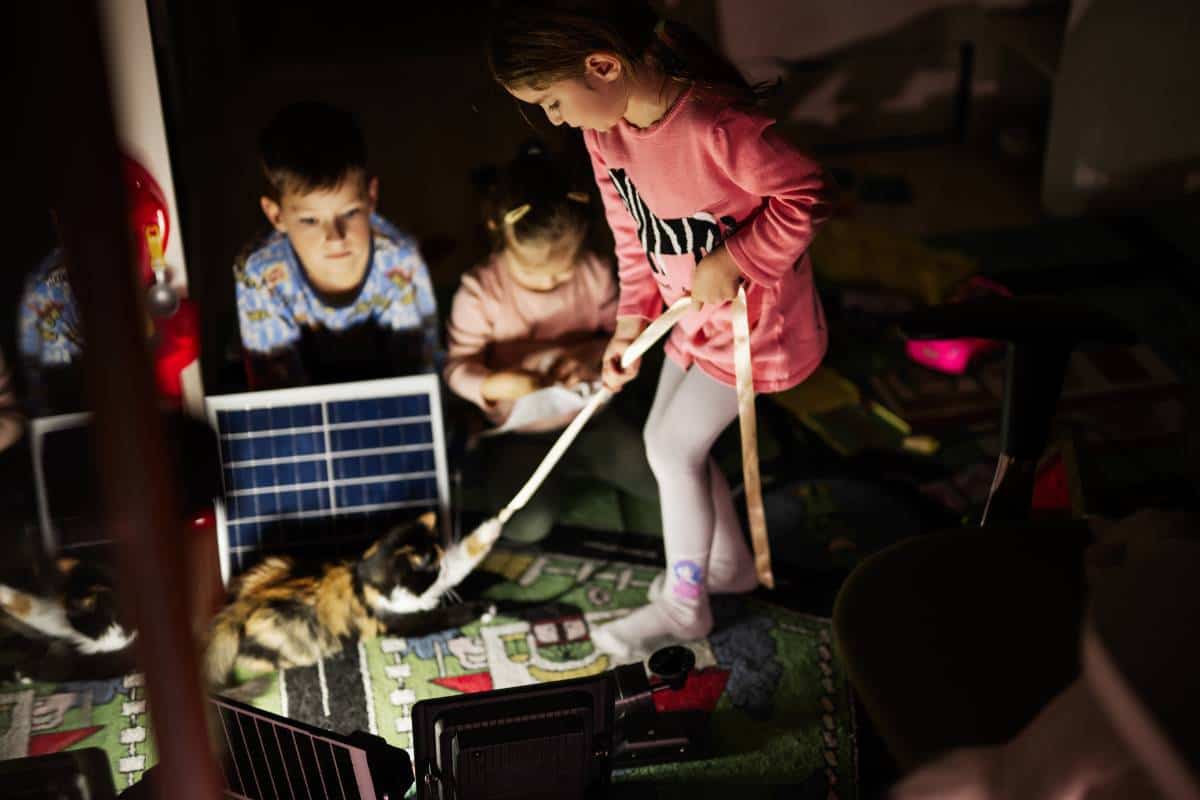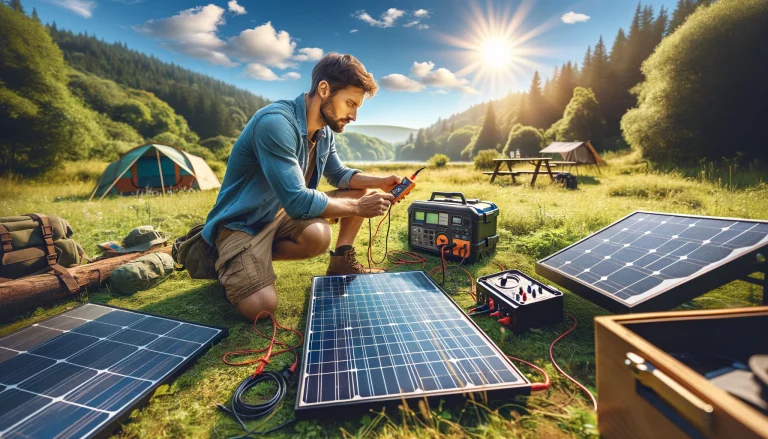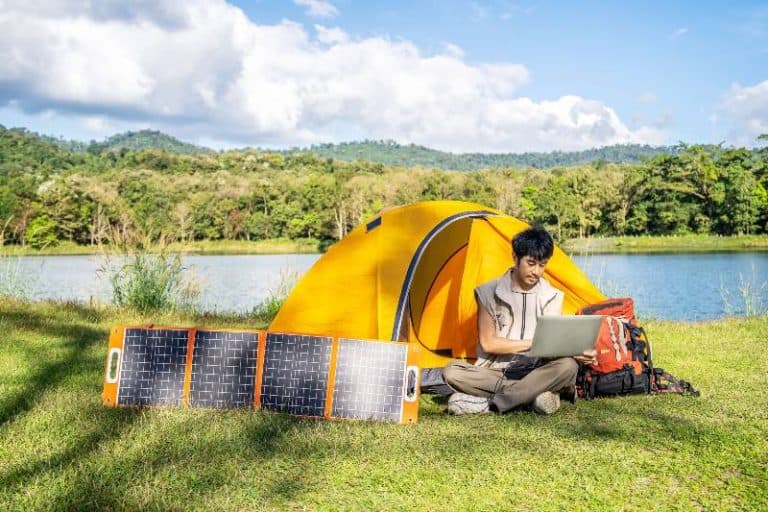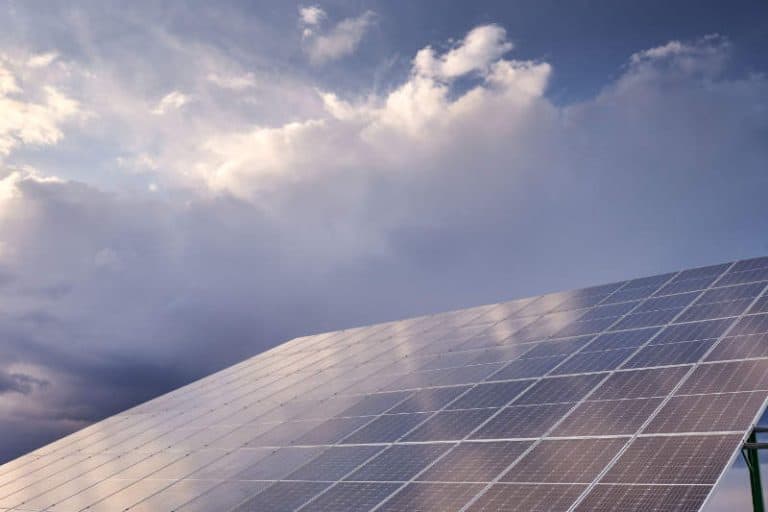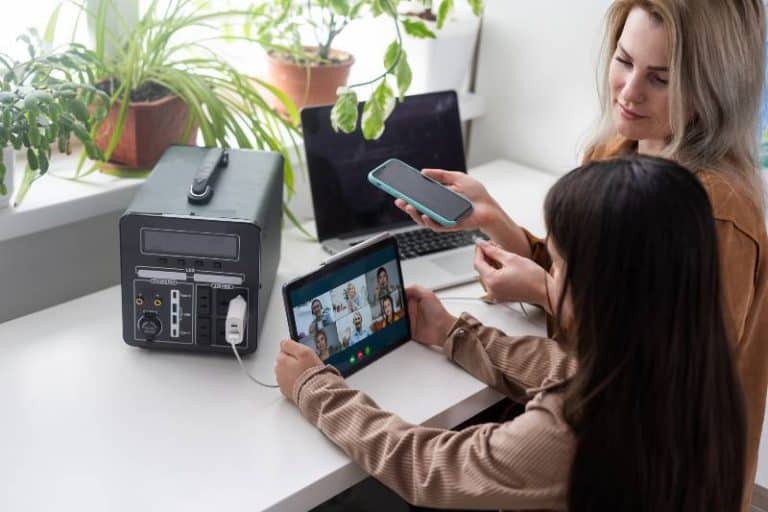Keep Your Family Safe With Solar Panels in Disaster
Imagine the lights go out after a hurricane sweeps through your town. Roads are blocked, power lines are down, and stores are closed. How will you stay connected? Where will you find fuel for generators?
Now imagine solar trailers arrive just in time to provide clean electricity. Personal solar lanterns give your family light. Charging stations keep devices powered. Water treatment plants run using off-grid solar microgrids.
This is the lifesaving potential of solar energy in disasters.
As extreme weather events increase globally, solar power’s ability to provide rapid, resilient energy access is more important than ever. This guide will explore how portable PV systems uniquely support emergency and humanitarian response when communities need it most.
Solar panels, according to LinkedIn, are easily transportable to affected areas, and can be quickly set up to provide power. This makes solar energy an ideal solution for remote or hard-to-reach areas that may be difficult to access with traditional energy sources and infrastructure.
Key Takeaways
- Solar deployable independence makes it ideal for off-grid disaster response.
- Systems scale from personal lamps to community microgrids.
- Case studies showcase solar’s impact powering relief efforts.
- Batteries store solar energy for 24/7 electricity.
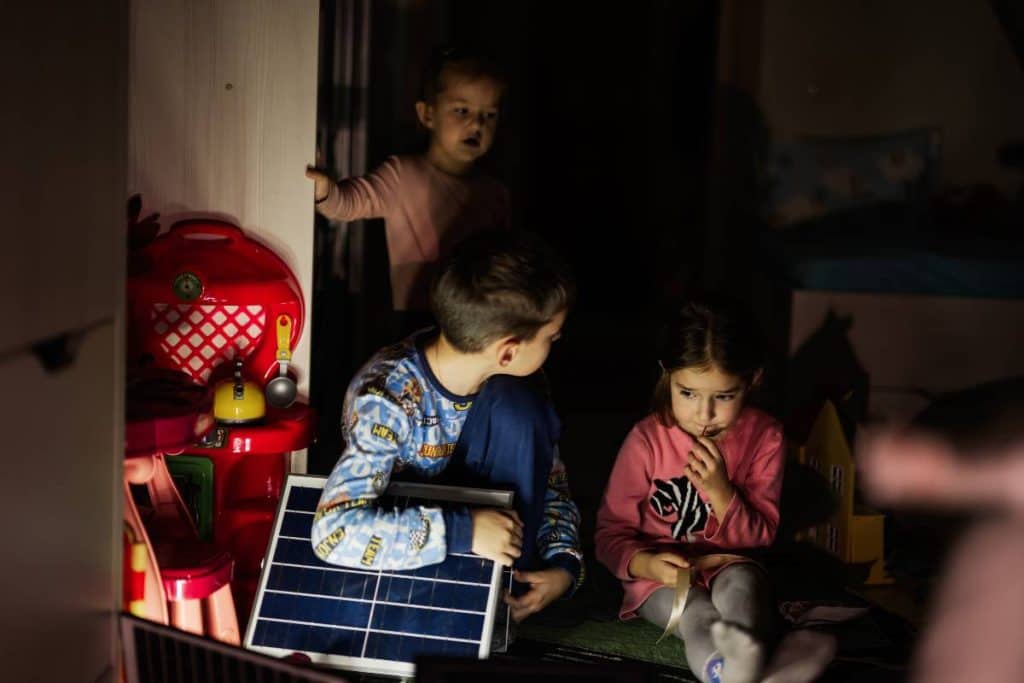
Why Solar Panels Excel in Disaster Situations
Solar photovoltaic (PV) systems offer unique benefits of solar in the context of disaster response:
- Rapid deployment – Modular systems install quickly compared to grid infrastructure.
- Independence – Solar functions off-grid, unaffected by wider power outages.
- Cost-effectiveness – Quick ROI compared to high diesel generator fuel costs.
- Low maintenance – Solar requires little upkeep or expertise.
- Scalability – Systems scale up or down to match needs.
- Environmentally friendly – Solar is emissions-free and quiet.
- Portability – Solar panels come in mobile, transportable kits.
- Durability – Panels are rugged and weather extreme conditions.
Because of these advantages, solar is becoming a preferred power source for humanitarian organizations and emergency managers responding to catastrophes worldwide.
“Solar systems allow us to respond rapidly in the field without reliance on diesel or infrastructure. They provide clean, renewable power exactly when communities need it most.” – Samantha Thompson, Disaster Response Director, Light for All
Next, let’s examine how solar energy is used across the phases of disaster management.
Solar Applications Across Disaster Phases
Solar panels play an important role across the various stages of emergency response, relief, and recovery:
Preparation
- Charge batteries and devices in advance of storms or other threats.
- Run community solar microgrids to provide resilient backup power.
- Equip facilities like shelters, hospitals, and water systems with solar+storage.
Response
- Rapidly deploy portable solar kits to provide power for communications, lighting, and medical care.
- Set up solar trailers and charging stations for immediate community needs.
- Power relief center operations, water pumping, and purification systems.
Relief
- Distribute personal-scale solar lamps, phone chargers, and cooking devices to affected families.
- Install solar+battery mini-grids to electrify temporary encampments, shelters, or clinics.
- Provide solar irrigation pumps and agricultural equipment to rebuild food systems.
Recovery
- Transition temporary set-ups to durable, permanent solar microgrids.
- Help households adopt rooftop solar systems to build long-term resilience.
- Equip schools, hospitals, and other public facilities with on-site generation.
Mitigation
- Incorporate renewable energy into updated resilience standards and building codes.
- Educate community leaders and emergency managers on incorporating solar in their DRR (disaster risk reduction) policies.
- Promote adoption of solar infrastructure to mitigate the risks of future blackouts.
Incorporating portable and permanent solar at all stages of the disaster cycle reduces vulnerability and enhances emergency response capabilities.
Solar Products for Disaster Response
A wide range of solar products are available to address energy needs in crisis situations:
Solar Chargers and Lamps
Portable, personal-scale solar devices provide survivor necessities:
- Solar lanterns – Provide light for homes and shelters.
- Phone/radio chargers – Charge critical communications devices.
- Water sterilization – Using UV LEDs powered by build-in solar.
Solar-powered lanterns provide personal-scale lighting.
Solar Kits and Trailers
Transportable solar generator kits offer rapid on-site power:
- Solar trailers – Towable systems with panels, inverters, and batteries.
- Microgrid kits – Packaged systems to electrify encampments.
- Mobile health units – All-in-one solar ambulances and clinics.
Community-Scale Solar Microgrids
Larger ground or rooftop mounted arrays provide neighborhood power:
- Solar microgrids – Local grid networks powered by solar+battery systems.
- Water pumping – Solar pumps keep clean water flowing.
- Water purification – Treat drinking water using UV sterilization.
Residential and Public Infrastructure
Permanent solar systems rebuild resilient power:
- Rooftop solar – Household systems provide personal energy access.
- Schools and hospitals – Critical facilities need reliable on-site power.
- Government and community buildings – Shelters, kitchens, community centers.
- Utility-scale solar – Rebuild grid infrastructure better with large solar farms.
Choosing the right solar solutions depends on assessing disaster risks and energy needs. But solar’s versatility enables addressing challenges across all scales and phases.
Case Studies: Solar Energy in Disaster Scenarios
Here are real-world examples of solar effectively powering emergency preparedness and humanitarian relief:
Solar Microgrids in Puerto Rico
After Hurricanes Irma and Maria, many of Puerto Rico’s grid connections were severely damaged. In response, sonnen GmbH worked with nonprofits to deploy 15 microgrid systems on the island to provide community-scale resilient power. These solar+storage systems electrified critical facilities like health clinics, community centers, and water purification systems with clean electricity.
Solar Water Pumping in Mozambique
After devastating cyclones and floods in 2019, the World Food Program used solar-powered pumps and irrigation to help rebuild agriculture in rural Mozambique. The solar pumps provided clean reliable water access for drinking and crop irrigation, helping re-establish food production.
Solar Portable Lanterns in Syria
Charging Stations in Puerto Rico
After Hurricane Maria, many Puerto Ricans were left without electricity but gained access to solar products with battery storage capacity. Entrepreneurs took advantage by offering solar-powered charging stations, allowing residents to pay a small fee to charge electronics. This community charging model spread rapidly across the island.
These examples demonstrate solar’s immense potential as an agile, renewable power source before, during, and after natural disasters.
Challenges and Limitations of Solar in Emergencies
While solar offers many benefits, there are challenges to overcome:
- Upfront costs – Solar systems require more initial investment than generators.
- Weather issues – Heavy rain, storms, and clouds can limit solar production.
- Technical expertise – Lack of local solar skills makes maintenance difficult.
- Battery constraints – Solar needs sufficient battery storage to provide 24/7 power.
- Site selection – Finding appropriate sites for large-scale solar farms can be difficult.
- Grid integration – Incorporating solar variability into damaged grids is complex.
However, costs continue to decline rapidly while battery storage capacities improve. Capacity building programs are also expanding local solar workforces worldwide. So limitations are reduced as solar and storage technologies mature.
In the aftermath of a disaster, solar panels work tirelessly, supplying essential power when traditional sources fail. Harnessing the relentless energy of the sun, these green powerhouses become lifelines, helping communities rebound. This powerful functionality underscores the robust resilience of the solar industry even in the face of devastating calamities.
Best Practices for Deploying Solar in Disasters
Follow these best practices when deploying solar for emergency preparedness and response:
- Conduct risk assessments to determine the most likely disaster threats and greatest energy needs.
- Identify key community infrastructure and facilities that should be prioritized for solar+storage systems.
- Design modular, containerized solar solutions allowing quick transport and set up as needed.
- Leverage solar+battery systems to maximize 24/7 electricity reliability and resilience.
- Include sufficient storage to cover 3-5 days without sunlight in case of extreme weather.
- Establish public awareness campaigns on safe usage of solar devices.
- Build local solar skills through training programs for solar panel installation and maintenance.
- Share real-time solar performance data to optimize energy management and distribution.
- Form cross-sector partnerships between solar companies, humanitarian groups, and emergency responders.
Taking these steps will enable solar to maximize its lifesaving potential when communities need it most.
| Solar Emergency Preparedness Checklist | Description |
|---|---|
| Risk assessment | Identify likely disaster threats and power needs |
| Priority infrastructure | Hospitals, shelters, water systems, etc. |
| Modular system design | For transportable, rapid deployment |
| Solar + battery systems | Provide 24/7 resilient power |
| Sufficient storage | Cover 3-5 days without sunlight |
| Safety awareness | Usage training to prevent hazards |
| Local solar skills | Installation and maintenance capability building |
| Data monitoring | Optimize energy management and distribution |
| Cross-sector partnerships | Collaboration between groups |
The Future Role of Solar in Disaster Management
Solar energy’s importance in global disaster risk reduction and climate resilience is only growing. Here are key ways the role of solar will continue advancing:
- Improving economics make solar+storage increasingly competitive with conventional power sources.
- Expanding capacity building trains more local workforces worldwide to meet demand.
- Battery storage capacities continue improving while costs decline.
- Mobile and modular solar solutions allow faster scale up and deployment.
- Solar-powered microgrids avoid single points of failure inherent in centralized grids.
- Smartgrid technologies better integrate high shares of variable solar energy.
- Drone-based infrared solar inspections rapidly assess post-disaster solar damage.
- Satellite-based solar monitoring and forecasting inform disaster planning and response.
- Climate-resilient solar engineering improves the ability to withstand extreme weather.
- Solar-powered EV charging facilitates zero-emission disaster response logistics.
With such innovations rapidly emerging, solar energy’s value proposition for supporting disaster-affected populations will only get stronger in the years ahead.
The Role of Solar Panels in a Natural Disaster
Investing in solar panels can play a crucial role in natural disasters. When a disaster strikes and the power grid fails, solar panels can provide a reliable source of electricity. Unlike traditional power sources, solar panels are not dependent on fuel supply or transportation, making them more resilient during emergencies also, solar panels require minimal maintenance.
They can continue generating electricity as long as the sun is shining. This can be invaluable in providing power to emergency services, hospitals, and other critical facilities that require constant electricity. Additionally, solar panels can also help in reducing the carbon footprint and mitigating the impact and intensity of natural disasters on the environment.
By harnessing the reliable power of the sun, communities can become more self-sufficient during emergencies and lessen their reliance on external energy sources. Investing in solar panels not only ensures access to electricity during natural disasters like hurricanes but also contributes to long-term sustainability and resilience.
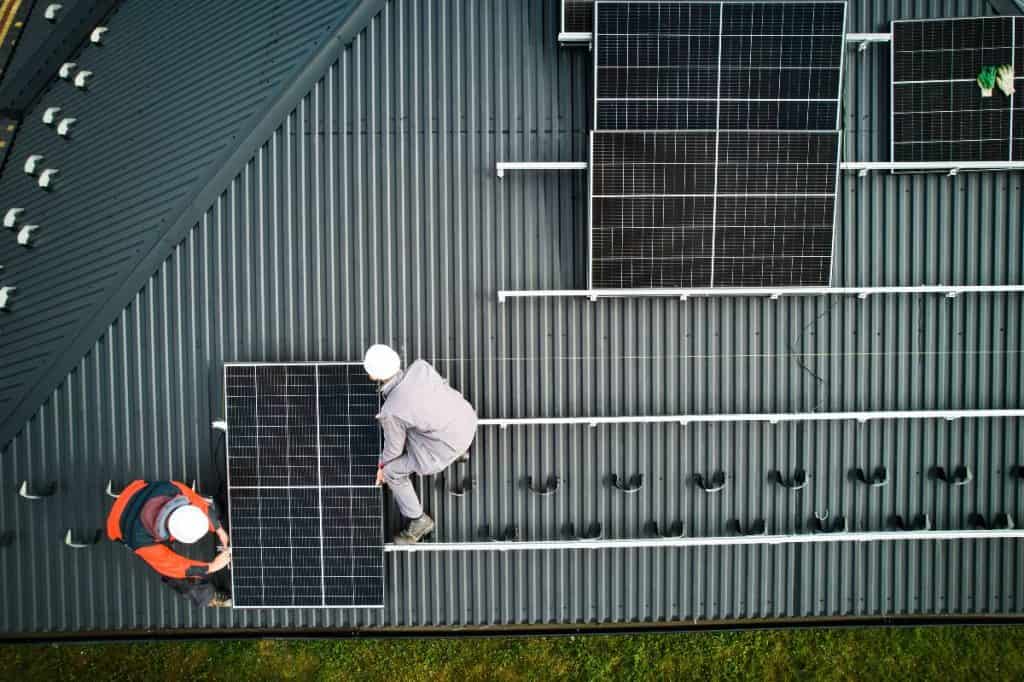
Solar Panels in Disaster FAQs
Q: What are the benefits of installing solar panels for disaster preparedness?
A: Solar panels offer a reliable source of energy during natural disasters when traditional power grids may be down. They harness the power of the sun to provide emergency power and can be used to power essential appliances and devices.
Q: How do solar panels contribute to energy independence during disasters?
A: Solar panels provide energy independence by generating electricity from the sun, which is a sustainable and reliable source of power. They can be used as an alternative energy system when the power grid is disrupted during a disaster.
Q: What role do solar panels play in disaster preparedness?
A: Solar panels offer a viable choice for disaster preparedness as they provide a long-term energy solution. They can be used to power essential appliances, such as lights, refrigerators, and communication devices, ensuring that your family stays safe and connected during emergencies.
Q: How do solar panels harness solar energy?
A: Solar panels harness solar energy by capturing sunlight and converting it into electricity. The photovoltaic cells in the panels absorb the sun’s rays and produce an electrical current, which can be used immediately or stored in batteries for later use.
Q: Are solar panels a sustainable energy solution for disaster preparedness?
A: Yes, solar panels are a sustainable energy solution as they utilize renewable energy from the sun. Unlike fossil fuels, which are finite resources, solar energy is abundant and can be harnessed without causing harm to the environment.
Q: How are solar panels different from solar generators?
A: Solar panels are the components that convert sunlight into electricity, while solar generators are devices that store and distribute the electricity produced by the panels. Solar panels are a part of a solar energy system, whereas solar generators are separate units that can be used to provide emergency power.
Q: What are the advantages of using portable solar panels in disaster situations?
A: Portable solar panels offer flexibility and mobility during disaster situations. Solar panels can be easily transported and set up in different locations, allowing you to harness solar energy wherever you need it most.
Q: How can solar panels contribute to disaster resilience?
A: Solar panels offer a reliable and resilient source of energy during disasters. They are not affected by the disruptions in the power grid and can provide electricity even when other energy sources are unavailable.
Q: Can solar panels be installed on rooftops or are there other options?
A: Solar panels can be installed on rooftops, but there are also other options available. They can be mounted on the ground, on poles, or even on movable stands, depending on the specific needs and requirements of your property.
Q: Are there any studies or research on the effectiveness of solar panels in disaster situations?
A: Yes, the National Renewable Energy Laboratory and other research institutions have conducted studies on the effectiveness of solar panels in disaster situations. These studies have shown that solar panels can provide reliable and efficient emergency power, contributing to the resilience of communities during natural disasters.
Q: Is solar energy clean?
A: Yes, solar energy is a clean and sustainable energy source. It does not emit greenhouse gases or contribute to air pollution.
Q: Can incorporating solar panels keep my family safe during a disaster?
A: Yes, incorporating solar panels can provide a reliable source of power during a disaster. They can be used to generate electricity even when traditional power sources are down.
Q: What is the lifespan of solar panels?
A: Solar panels have the potential to last for 25-30 years or more. However, their efficiency may slightly decrease over time.
Q: How efficient are solar panels?
A: Solar panel efficiency refers to the percentage of sunlight that can be converted into usable electricity. Currently, the average efficiency of solar panels is around 15-20%.
Q: Can solar energy be used to power emergency response teams during a disaster?
A: Absolutely! Solar panels can be used to provide power for emergency response teams, enabling them to operate essential communication and medical equipment.
Q: Can solar panels be used to power communication systems during a disaster?
A: Yes, solar panels can be used to power communication systems such as radios and cell phone towers, ensuring uninterrupted communication during emergencies.
Q: Are solar panels a good investment for disaster preparedness?
A: Yes, investing in solar panels for disaster preparedness is a wise choice. They offer an independent and sustainable power source, reducing reliance on traditional energy grids.
A Brighter Future Powered by Solar
The use of solar energy is an agile, renewable solar power source uniquely suited for disaster scenarios when communities need access to electricity the most. From charging essential devices to powering medical facilities, solar supports response and recovery worldwide.
However, fully utilizing solar’s immense potential requires understanding its capabilities across various emergency situations. Proper planning, partnerships, capacity building, and data analysis are also critical for successful deployment.
If you found this guide valuable in highlighting solar’s lifesaving role in disasters, I encourage you to join me on the journey towards more sustainable, resilient power systems by subscribing to the Electrik Living newsletter.
By subscribing, you’ll receive our latest insights on accelerating renewable energy adoption, innovations in battery storage tech, real-world solar success stories, and tips for improving your energy resilience.
Together, we can build a future where solar provides hope and empowers communities in the darkest of times. The path is bright when illuminated by sustainable power.
